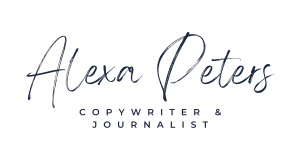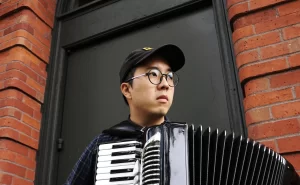(Link to article, here.)
The first thing you notice is her voice. Singer-songwriter Margaret Glaspy sounds both lilting and childlike, like some sort of cross between Joanna Newsom and Madeleine Peyroux. But Glaspy is hard to pin down: over the years this young musician has played everything from marching band trombone to Texas-style fiddle. She was a frequent participant of the Old Time Fiddlers’ Championships in Weiser, Idaho but once she settled on guitar, she was churning out her own folk-rock gems in no time.
Glaspy took some time away from recording her first full-length album to chat with the Journalabout her musical upbringing, her guilty-pleasure love for pop music and the memorable acoustic guitars (and her mom’s vintage Fender Princeton amp) that she grew up with. Glaspy may not be a household name yet but many guitarists in the know (including Nels Cline, who is currently lending her a guitar) have decided she’s a unique performer to watch out for.
Fretboard Journal: What got you into music?
Margaret Glaspy: When I was in the second grade there were fiddle players playing in our town at a community gathering. I saw some fiddle players playing and said I wanted to play the fiddle, so I got into a school program that started the next year. I played the fiddle from about the third grade until I was about 15 or 16. I was in band and played trombone for a while, too. I was a little nerd.
Then, I was playing Texas Style fiddle at the Old Time Fiddlers’ Championships in Weiser, Idaho. I went to Weiser for a long time, for about five or six years in a row and around my last couple years I started to sneak off and sing more than I played the fiddle. I was kind of getting out of touch with [fiddle]. Once I started singing I threw the fiddle out and started to write songs.
FJ: How did you start playing guitar?
MG: Are you familiar with Texas-style fiddling back-up? It’s really particular and there are lots of passing chords and sort of this “boom-chuck’ thing that happens, and I got hip to that. It taught me a lot because you have to learn all these passing chords, which is fun. It launched me into new territory, in terms of hearing and executing chords that way.
FJ: Funny that you’d go from fiddling in the front to the back-up parts to learn guitar.
MG: It was a very particular place to start. Now, I’m pretty far from that [kind of guitar playing]. I mostly play electric guitar now. I guess you could call it rock, for lack of a better term. What I do now loosely relates to the fiddle music because it’s where I came from, but listening to me now you wouldn’t guess I started there.
FJ: Is your family musical?
MG: Totally. My parents they are really creative, open-minded people that really love good music and always had good music on. My dad always had a guitar since he was young, and my brother played a guitar from a young age. My mom plays guitar and my sister plays guitar now, too. I’m not special in that regard as far as my family goes!
FJ: Do you play together?
MG: We always have. Whenever we’re all home, someone’s always playing something—there’s always a guitar in whatever room we’re in. It’s fun to go home, especially after making my way and becoming a professional musician, to look at the guitars I grew up with and think, “Wow… interesting.”
FJ: What were some of those “interesting” guitars?
MG: One of my favorites was a six-string Yamaha dreadnought that was around the house all the time. I love that guitar and played a lot on it. There were also two 12-string acoustic guitars. They were both some ambiguous brand. Often, they would be strung with six strings because we didn’t have enough strings. But there was so much sentimental value in the look of them. You’d look at the headstock and there’d be all of these empty [tuners].
FJ: What was your first guitar?
MG: My first guitar that I bought for myself, probably in conjunction with my dad, was an old parlor guitar. It was a really small beautiful guitar. I loved it and I played it for a long time and then I had to get it repaired. Unfortunately, when a guy adjusted [the neck] and put it back on he used all this epoxy! It was like permanent cement glue all over the neck. I dropped it off again after the repair and said, “This is wrong,” but it was irreversible. The only way you could get the epoxy off was by taking the guitar apart and it was such an old instrument that it didn’t make sense. So, that guitar kind of went out of style because it was branded with this crazy liquid cement on it.
I never used that guy again. I was really young and didn’t really do enough research. I was so new to the guitar world. I remember being mad, but not being as mad as I should’ve been. If I knew that guy now I would’ve given him a pretty rough phone call… at least.
FJ: Speaking of repairs, what’s your favorite guitar shop these days?
MG: TR Crandall Guitars in Alphabet City in New York. They have the best selection, repairs and human beings!
FJ: When was it when you switched to electric?
MG: I [still] played acoustic guitar for a long time. Once I moved to New York, I decided to make that switch. The first guitar I bought for myself in that realm was a Harmony Stratotone Jupiter. I have two pickups on mine but the bottom one doesn’t work. I just use the top pickup. Harmony guitars are definitely having a heyday right now; they’ve become a hip thing to play.
FJ: Do you have any other electrics?
MG: I’ve been exploring other electrics. I’ve got a Silvertone that’s on loan from Nels Cline. I find that I like those kind of cheaper guitars from the Sears Roebuck catalog, though I’m always trying to find one that can stay in tune. The cool thing about these guitars is the pickups. At times, I do crave something that can hold up better on the road.
FJ: When you play electric, what is your setup like?
MG: My amp setup has evolved. I used to take whatever [a venue] had as long as it was a tube amplifier and medium-sized. As of late, I’ve gotten a real education. A musical partner of mine, Julian Lage, has had a huge influence on me in terms of teaching me so much about guitars and amplifiers. Nels Cline, another friend, has also been teaching me a lot. He’s such a wealth of knowledge.
Anyway, that’s a long-winded way of talking about my amp setup. I use different things for different scenarios. One is a tweed Fender Vibrolux. I really love this amp when I’m able to turn it up because it doesn’t crumble until around eight or so, but it’s so loud that you don’t use it there unless you’re playing a massive venue. Otherwise, it’s blasting behind you! When that amp doesn’t make sense and something smaller does, a little tweed Champ is rad. That’s an amp of Julian’s that he lets me use. It’s another one that’s a little hard because it distorts at about six, and that isn’t that loud because it’s got a much smaller speaker. If you set it on 3, it’s amazing for recording. When you set it at about three and dig in it starts to distort, so that’s where I love to have it. You just put up the volume in the studio and let the studio do the work rather than the Champ.
Nels has turned me on to a vintage Magnatone amp. The vibrato/tremolo on that amp is really great. I don’t get as much low-end from that amp because it’s not that big of a speaker.
FJ: Yeah, those Magnatone amps are highly sought after and have a great tone.
MG: Totally. My mom has a Fender Princeton amp at home—I didn’t realize how hip it was growing up. It was handed down to me through her great aunt, I think, and when I was about 15 I’d see it and think “cool.” I didn’t really play electric guitar then. Now I’m like, “Mom, give me that amp!” I want it… I really want it! She won’t give it up, though, because it’s a family thing to her.
FJ: You mentioned your roots are in fiddle music. Is that what got you into Jayme Stone’s Lomax Project?
MG: Jayme Stone asked me to be a part of that about two years ago. I kind of just jumped into it to see where it would lead. The project is kind of like where I started, in ways…it has a lot of folk influences. It’s all about Alan Lomax, his life and the recordings he made and archived. As a group we each chose three songs from the archive that we liked and worked to remake them and play them together. It was a learning process for me in terms of collaboration and style because often I’m in my own orb… I play my own songs.
FJ: Speaking of your own songs, do you have a writing process?
MG: I’ve really tried to make songwriting a study or like a job. I’ve tried to not make it conditional to how I’m feeling. The thing that sparks me to song write is it makes sense to me. I process life through songs, and I think that when times are hard I do get sparked, but I don’t like to orient myself around songwriting that way all the time.
FJ: Who are some songwriters that inspire you?
MG: Elliott Smith is a really big influence on me. He’s a big beacon for me. Also, Joni Mitchell—she’s incredible. Who else would be in the top? To me there are so many different regions of song writing that I think about. Weezer records like Pinkerton are still some of the most important records to me. I love that record so much. It feels kind of hard to go public with this, but I love pop music. I feel like it’s candy to me, so I try not to eat too much of it, but I love it.
FJ: Who specifically? Katy Perry?
MG: Honestly, it’s more of a sweeping thing. There are certain artists that pop out to me but it’s only because it’s more the machine than the artist itself. I can listen to Justin Bieber, Taylor Swift, Katy Perry, all these really, really Top-40 pop musicians and I love the arrangements and that they’re really focused songs. In pop music, there’s no guessing what the song’s about. It’s always clear and I love that about it.
FJ: I like how you said “the machine” because it’s clear you see it what it is and you aren’t pitting it up against the standards of other genres.
MG: Yeah, I suppose. I’m not sure. It feels like a different category to me, it’s not my top tier of stuff that I love. But, the songwriter in me just looks at everything equal. I look country songs and rap songs and pop songs and see what everyone’s done with them. It all matters to me and affects me. I just love how focused pop songs are.
FJ: In terms of pop songs, what do you mean by focused? Do you have a specific example?
MG: An example [of a focused pop song] is this sense that all the verses reflect the chorus. Everything runs through the chorus and there is not much ambiguity. Often, in pop songs and the pop canon—there’s a continuity about them, a sense that it’s all focused on this one thing, this one theme. I personally like to write that way. I like songs to be very cohesive. That might even be a better word for what I’m trying to explain.
As a younger songwriter, I was taking you through a maze and saying, “If you can get this, then you are special.”It was a little pompous in a way. It was easy to hide behind because I was making these little structures, they had cool words and cool metaphors but they didn’t make a cohesive song. As I get older and write more, I like to lay it out for people in a way that isn’t too hard. I like to just give them a good song that’s coming straight from me that isn’t shrouded in metaphor.
FJ: Has anyone ever come up to you and given you a comment about your music that has really inspired you or gotten you out of a rut?
MG: Anytime somebody says, “just keep doing what you’re doing,” or has some connection to the music I’m just excited, that’s enough for me. It’s a blessing to have people say that. I feel lucky to play music period. If there’s a show, I’m excited that it even exists. Every little bit really means a lot to me and I try not to take it for granted because it’s all special and absurd in a certain way.
FJ: What are some goals you have for the future?
MG: I’m making my first full-length record right now. We’re just about to enter the studio for it, should be released in the Spring 2016. It’s more of a rock record and based on a trio sound: electric bass, electric guitar and drums. That’s the big thing on the schedule right now.
Long-term, it’s just to make good music… I don’t need a lot of money. As long as I can pay my rent and get by I just feel like a queen all the time. As long as I can do what I do and write and play and learn every day, I’m such a happy clam. -Alexa Peters
Above Photo: Sasha Arutyunova




